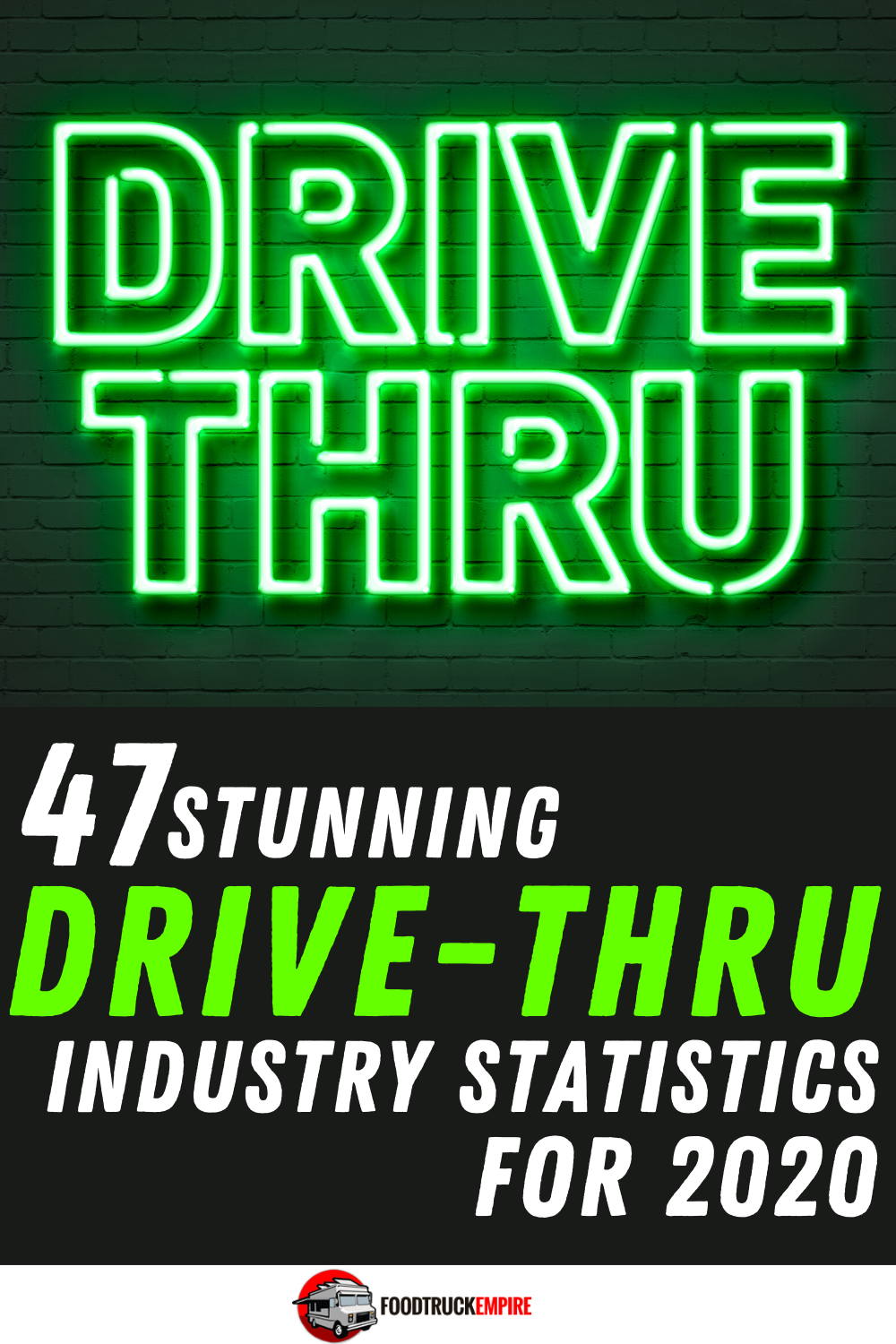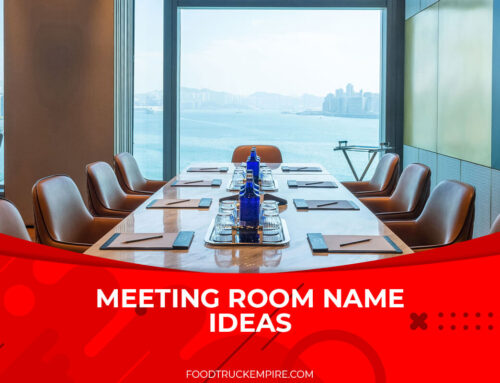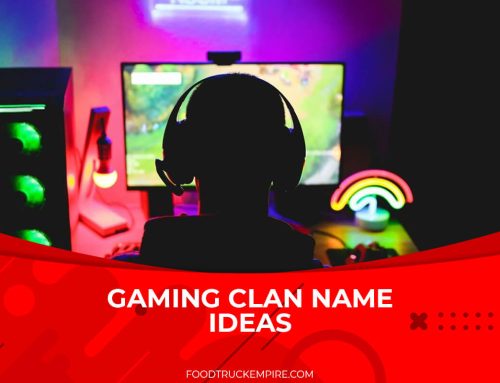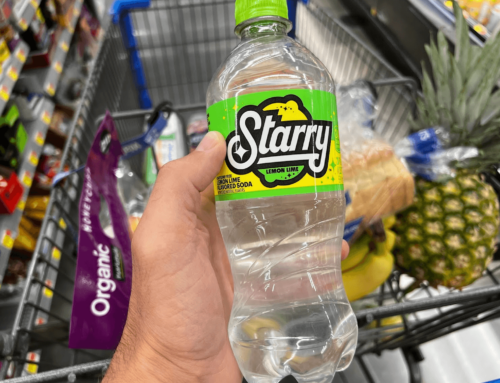Since their inception in the 1960s, the drive-thru has been a growing channel of fast food industry sales. But in 2020 as the global pandemic has hit, the drive-thru became a mission critical sales channel for preserving store revenue.
Even before the COVID pandemic hit, between 60% – 70% of some certain quick serve restaurant’s sales came from drive thru lanes. In the current environment Wendy’s reported generating 90% of all business from drive thru. Those are staggering numbers even given the current environment.
But it’s not just traditional fast food that have taken note of this channel. The coffee industry, particularly Starbucks accelerated their strategy add more drive-thru’s and less mall locations.
Based on the data, you can expect many more restaurants and coffee shops to add drive-thru options over the next decade. Let’s examine some of the industry statistics and data-backed predictions for this sales channel organized by category.
Drive-Thru Fast Facts
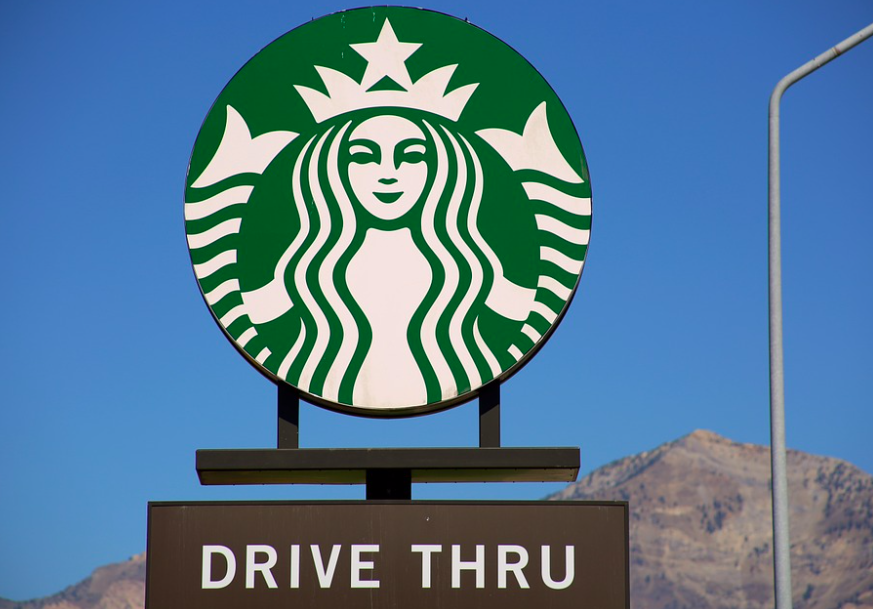
Coffee chains like Starbucks are adding more drive-thru service locations over the next 18 months.
Drive thru sales represent 70% of fast food sales which generates billions of dollars for the industry each month. (The New York Times)
According to the NPD Group, a leading market research company, 57% of hamburger fast food customers use the drive-thru lane, 40% with Mexican QSRs, and 38% of chicken fast food customers went straight to drive through lanes.
Americans visit drive thru lanes about 6 billion times each year according to some statistics. (AItrends.com)
Another data from the NPD group suggest that fast food drive-thru’s generated a revenue of $8.3 billion just this last March, an increase of $3oo million compared to the same period in 2019. (The New York Times)
In a survey made in 2015 on customers favorite drive-thru restaurants yielded McDonald’s at the top, followed by Burger King and Wendy’s.
Back in 2009, Wendy’s was the fastest serving drive thru with an 134 second average service time, while Chick-fil-A got a high grade for accuracy of orders served with a whopping 96%.
Drive thru and Climate Change
- According to a study made by the U.S. Government, having your engine idle longer than 10 seconds consumes more fuel and generates more emissions than restarting your engine. The government suggests that an idle engine in a drive-thru is both bad for your wallet and the planet. (World Economic Forum)
- The U.S. Department of Energy projected that getting rid of idling engines would be akin to eradicating close to 5 million cars off the roads. (World Economic Forum)
- Towns in New Jersey, California, and Missouri have laws banning the creation of new drive thru in fast food restaurants with Minneapolis recently joining the group of states. (World Economic Forum)
Drive-Through Coffee Statistics
- Recognizing higher profits, Starbucks announced last year that they would include a drive-thru on 60% of new coffee shops to be built (pre-pandemic figures). (Nextep Systems)
- In the drive-thru industry, Starbucks still lags behind major competitors such as McDonald’s and Dunkin’. (Bloomberg)
- An espresso drive-thru can sell an average of 250 cups of coffee drinks and espresso in any given day. (Nextep Systems)
- An order of tea, coffee, and a peanut butter cookie took around 6 minutes on a typical Thursday in Chicago. During that time, 6 cars lined up showing customers eagerness to wait despite the long wait. (Bloomberg)
- Dunkin’ introduced the concept of a drive-thru mobile order window in 2018, exclusively for those who ordered through their mobile app. Customers who order using this app goes directly to the “Mobile Order Pick Up” lane to avoid jamming up with the ones lining up to order real-time. (Nextep Systems)
- According to restaurant consultant, Tom Cook of King-Casey, 70% of customers go for drive-thru in Starbucks with car service while only a small percentage stayed inside. (Bloomberg)
Related Reading: 57 Global Coffee Industry Statistics and Consumption Trends
Speed of Service Data
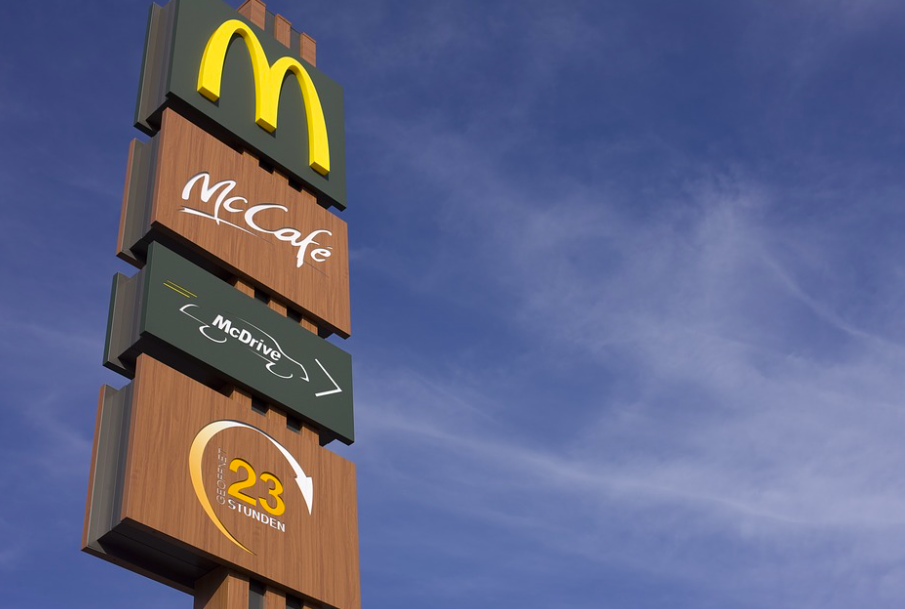
As more customers enter the drive-thru lane, the speed of service is impacted.
Last year, customers waited an average of 255 seconds in a drive-thru lane, 20 seconds more compared to 2018. (Forbes)
McDonald’s came last in a SeeLevel HX study made last 2018, with 273.29 seconds. (QSRMagazine.com)
In a study made last year, Dunkin’ came in as the fastest serving fast food drive thru with 217 seconds, while Chick-fil-A came in last with 323 seconds or about 5 minutes and 20 seconds from speaker box to window. (Today)
Despite setting the benchmark in 2011, Wendy’s record of 116 seconds serving time in 2003 hasn’t been beat yet. Wendy’s in 2011 posted an industry-best average time of only 145 seconds, followed by Taco Bell with 146. The slowest average time was held by McDonald’s with 184 seconds that same year.
In 2018, the average serving time for the top 10 fast food chains was at 234.08 seconds. (QSRMagazine)
In a QSR survey done in 2013, the former fastest serving fast food chain (Wendy’s) clocked in at 133 seconds. Ten years prior, Wendy’s went for a record-setting time of 116 seconds of serving time. (Today)
Last year, Wendy’s and Burger King were 2nd and 3rd in the ranking, each posting a serving time of 210 and 213 seconds respectively. (Statista)
The acceptable time limit with customers is between 3 to 4 minutes. Anything beyond that is unsatisfactory according to experts.
A SeeLevel HX study made between June 1 to July 30 in 2018 of 10 fast food chain’s speed of service, Burger King came out on top with 193.31 seconds or about 3 minutes and 22 seconds. (QSRMagazine)
Deterioration in the speed of service times has caused fast food stats to decline in recent years. Despite maintaining its range of 2 to 3 minutes serving time, the fast food industry should not disregard this to sustain consumer satisfaction.
Last year, 39% more customers used drive-thru lanes compared to 2018 according to a study by the National Restaurant Association. (Forbes)
A QSR Magazine study revealed that Chick-fil-A has the longest drive through line. About 35% of the time, an average of 6 or more vehicles lined up in their drive-thru lanes, a number greater than any of their competitors. (Statista)
Back in 2013, QSR Magazine reported that 65% of McDonald’s sales in the U.S. came from drive-thru customers.
Related Reading: 57 Critical Fast Food Industry Statistics and Trends
In 2018, Dunkin’ introduced its dual-lane drive through system. Chipotle unveiled the “Chipotlanes” in 2019, its own version of the said drive through. (CNBC)
Complex items, as well as higher volume orders, were seen as factors affecting slower serving time in drive throughs across the fast food industry, according to a survey. (Today)
McDonald’s had the highest number of locations with order-confirmation boards, while Chick-fil-A had the best order accuracy rate according to a 2019 study made by industry publisher, QSR. (Statista)
60% of Chick-fil-A’s drive throughs have employees taking orders outside the queue. (Forbes)
Depending on how you tally them, but there is an estimated 200,000 drive-thru operations across the United States. (AItrends)
Convenience, menu variety, and price are how customers rate their favorite drive-thru restaurants according to a survey made in 2015. (AYTM)
34% of customers eat on-site at quick-service Mexican restaurants with drive-thru, while 26% do takeouts. It’s a different story with chicken fast food chains with 25% dining in while 36% order to-go.
Weathering the Pandemic
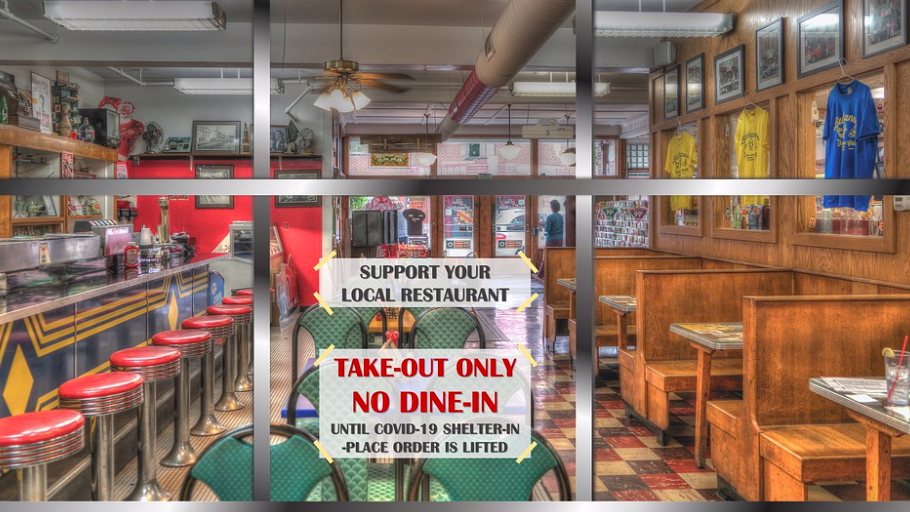
COVID-19 has closed dine-in service.
Starbucks, Taco Bell, and Chick-fil-A are just some of the fast food chains pushing for their patrons to get their food via takeout. The 3 companies are making full use of drive through lanes to disburse their food while maintaining social distancing among customers. (CNBC)
Curbside pick up in fast food chains is gaining popularity as it offers the best option to distribute their food. The food is fresher and hotter, convenient, and it eliminates handling by a delivery person. Claiming food from curbside pick up is considered a lifeline among struggling fast food chains during the current pandemic. (QSR Web)
Since 60% to 70% of most fast food sales come from drive through counters, satisfying consumer experience is the key to maintain this figure especially during the pandemic according to some experts. (CNBC)
Being a pioneer in the fast food industry, McDonald’s is seen as the one who could weather through this pandemic among all of its rivals. McDonald’s has invested largely on its drive throughs by putting up digital menu boards that entice customers to order bigger, more premium items. (The New York Times)
Our world is heading towards the “new normal”, a society with less to no-touch/contact, triggering certain industries to innovate with ways to deliver their product. Some fast food chains are now turning to curbside pick up to limit customer-staff contact. It also provides a better control process as well as maintaining food quality from kitchen to consumer. Curbside pick up is seen as a more safe and sanitary way of handling food than 3rd party delivery services. (QSR Web)
The current health emergency will make every restaurant consider adding drive thru service. This includes separate take-out/curbside pick up lanes and a new kitchen dedicated for off-premises dining. This move is expected to be the new standard moving forward. (QSR Web)
The Drive-Thru Renaissance

Vintage drive-thru restaurant from the 1960s.
Chipotle is planning to add “Chipotlanes” in 60 locations by the end of 2019, this includes putting up drive through lanes in more than half of the new locations in 2020 (pre-pandemic figures). (Business Insider)
McDonald’s bought a company last year for $300 million to enhance its menu boards.
McDonald’s acquisition of tech startup companies along with on-the-side retooling shows a promising sign for the drive-thru renaissance. (Business Insider)
San Diego based Jack in the Box chose to streamline their plans of remodeling their old chains by concentrating on drive thru. These upgrades include adding more canopies, LED lighting, and improved digital menu boards. (Restaurant Business)
Chipotle isn’t alone in looking at a more high-tech drive thru. Dunkin’ and Starbucks shops are already in the testing stage of drive thru pick up lanes utilizing mobile orders. (Business Insider)
Chipotlanes exhibit the fusion of efficiency with tailor-made technology. Using their app or ordering through their website, customers can effortlessly pick up their food from these windows quickly. Chipotle shows the way for other fast food chains to follow by adapting to available technology. (Restaurant Business)
Industry Predictions
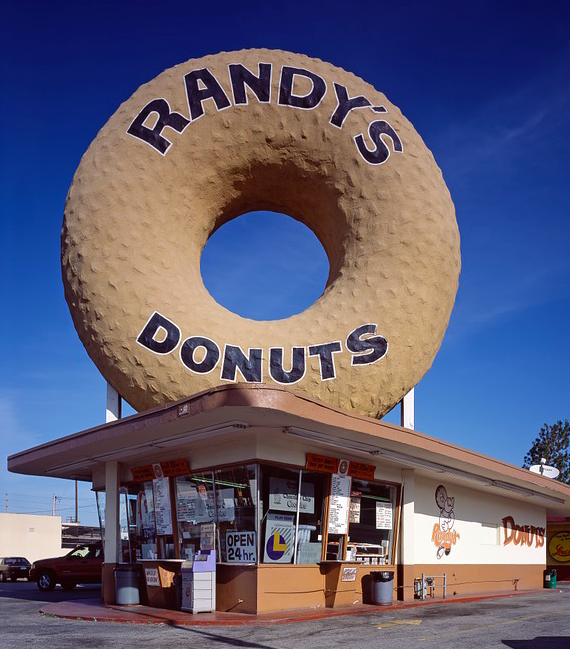
What’s next for the drive-thru and take out industry?
Since a large portion of fast food sales comes from this sales channel, fast-food chains are expected to weather through the current global health crisis better than restaurants that relied on dine-in sales. The creation of curbside pickup lanes is one of the innovation implemented to help speed up this process.
These curbside pickup lanes or parking spots allow customers to wait for their food to be prepared while keeping the flow of the line moving behind them. After the meal is complete, an employee will hand deliver the food through the car door window.
The drive thru is viewed as a lifeline for most fast food chains which are just some of the industries expected to take a big hit with this current global pandemic.
Despite the grim outlook, the food industry is adapting to the “new normal” by introducing innovative ways to distribute their food to their customers. With McDonald’s and Chipotle leading the way, other fast food chains are sure to follow their lead in an effort to survive the current crisis.
Unfortunately according to studies, drive through lanes remain piled up with an average waiting time of 255 seconds or around 4.25 minutes from the speaker box to the window. This can be attributed to complex menus to unexpected volume orders among other factors that delay the serving of the so-called “fast food”.
As drive-thru traffic increases we predict scaled down or simplified menus will be put in place to improve through-put. As more drive-thru windows are added, more pickup parking will also be dedicated to serving these guests.
This trend is unfortunately another hit to the already struggling shopping mall industry. Restaurants and coffee shops will be moving away from these locations because many don’t offer drive-thru options.
